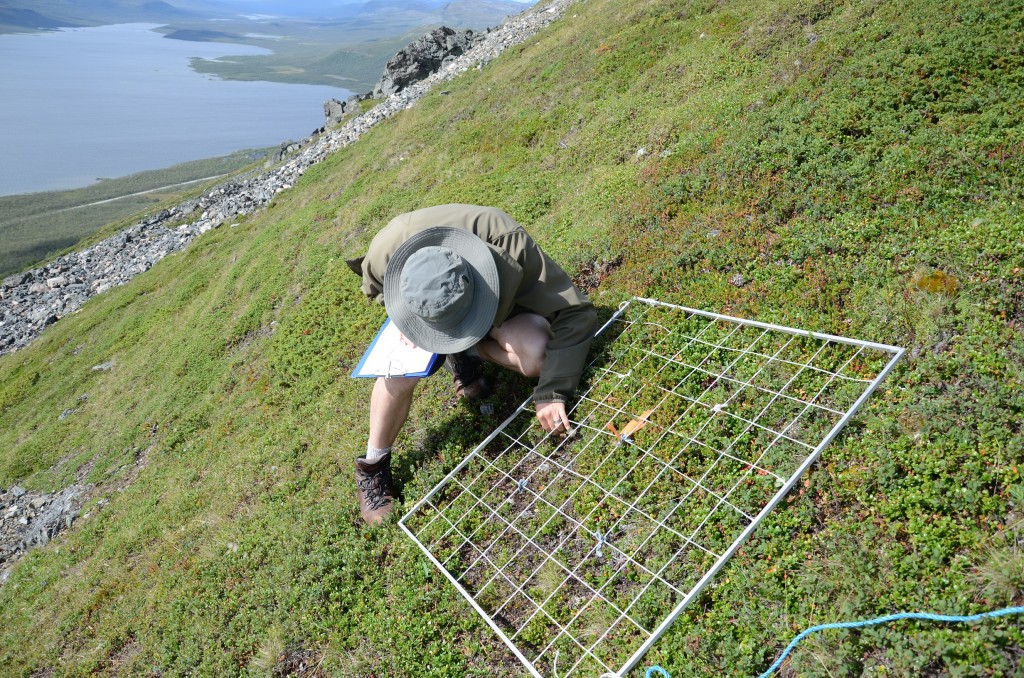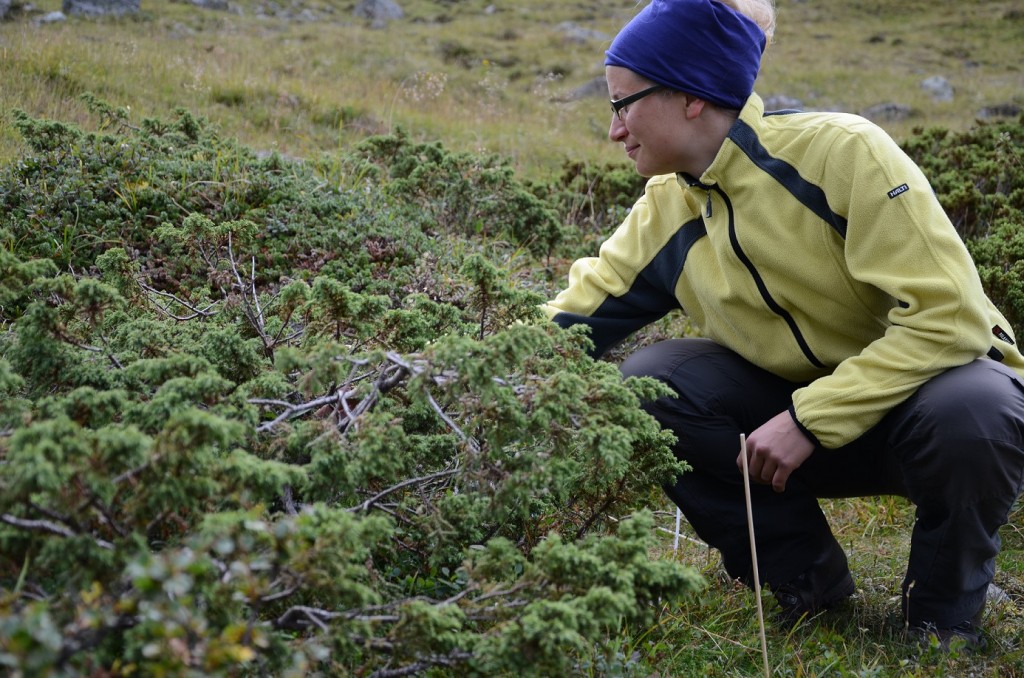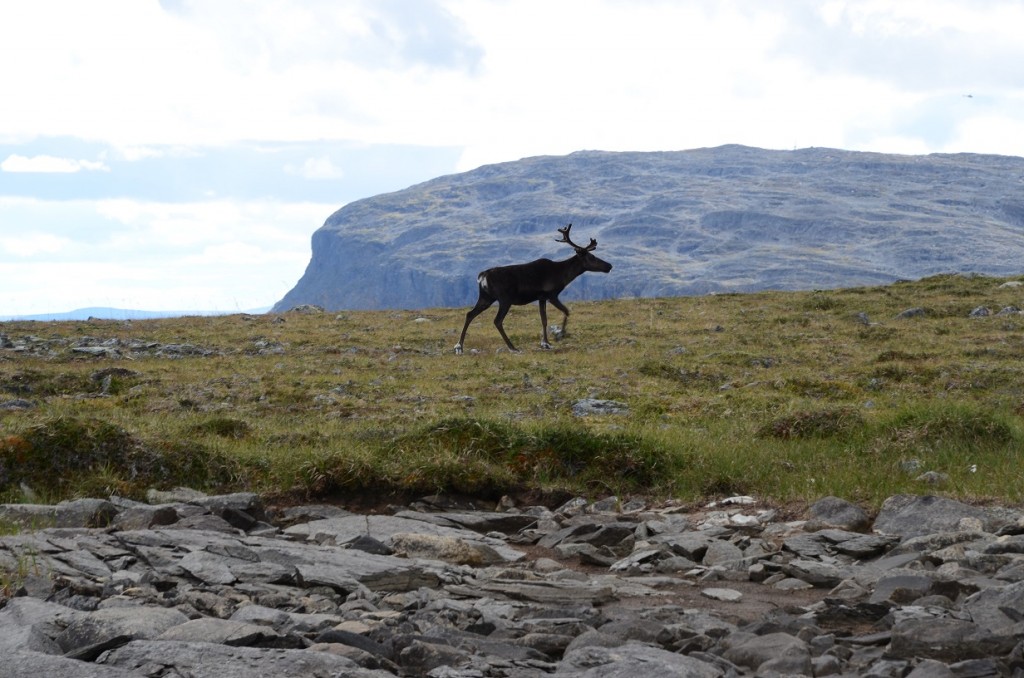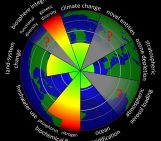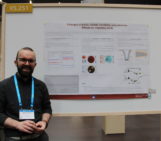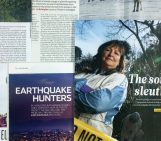People started warning me about the mosquitoes back in April. It sounded grim. But when I arrived in Finnish Lapland in August, the mozzies had peaked earlier in the season when temperatures were unusually high, and were all dead. This was a fortunate escape: Miska Luoto of the University of Helsinki and his team of researchers, who I was following as part of an EGU Science Journalism Fellowship, told me that in previous years they’ve even had to eat their sandwiches underneath protective mosquito net hats. Reindeer, on the other hand, were everywhere – on the road, on the fells, and even on the menu.
Not only was I lucky on the insect front and to win generous funding from the EGU, but the scientists were hugely welcoming, knowledgeable, carrying out interesting research that combines elements of ecology, geomorphology, hydrology and climate change, and extremely patient with all my questions. A team of eight post-docs and students at all levels – PhD, masters’ and undergraduate – had been in place for around six weeks when I visited in early August. Their surveys of vegetation, along with assessments of soil moisture, soil temperature and landscape factors, should reveal in more detail why plants just beyond the treeline grow where they do. As a result, the researchers will be able to fine tune their models of plant cover for much larger areas than they can survey, and use these species distribution models to predict how vegetation in the region will respond to climate change. Despite only occasional days off and working late into the evenings, the team were happy to be there. “It’s the best summer job I’ve ever had,” said one, with another adding that “it doesn’t feel like work”.
Perhaps the Finnish sauna habit helped – the research station at Kilpisjärvi, the team’s temporary base for the summer, has not one but two saunas – a wood-fired version by the lake, where researchers get a regular twice-weekly time-slot, and an electric one in the basement. Although, to the sauna connoisseur, electric saunas are somewhat inferior.
The weather was also good, apart from occasional showers, and the scenery was stunning – lakes and mountains in every direction, in a province with just two roads. For a location so remote, Kilpisjärvi is surprisingly well connected. There’s a mobile phone mast on top of Saana Fell so communications were easy, despite sometimes ending up on the Norwegian network if you headed too far north; Kilpisjärvi Biological Research Station is near the point where Finland, Sweden and Norway meet. Just down the road, Kilpisjärvi village has a large supermarket, often visited by Norwegians to buy (relatively) cheap food, including reindeer meat, and alcohol, so it was easy to stock up on snacks and research items like batteries for GPS kit.
It wasn’t until an evening trip to the Arctic Ocean in a fjord near Skibotn, Norway, around 50 km away that I realised I hadn’t seen sheep or the emerald green of meadow grass for days. The climate is more maritime here, both wetter and warmer, and it’s about 500 metres lower than Kilpisjärvi. The water in the fjord was an icy turquoise-grey and porpoises patrolled the central channel.
It’s light so late in the summer that there was no need to rush to get back from the field before nightfall, unless you wanted to make the 5 pm dinner serving at the research station. Although the sun nominally set at about midnight when I was there, with dawn at around 3 am, it was never truly dark. I began to sleep with a hat pulled down over my eyes to avoid being woken in the early hours. That was the strangest thing I found on my return – as I sat on the coach back from Heathrow, the sky darkened and there was my first sunset in a week.
I’d like to say a massive thank you to the EGU for funding the fellowship and to Miska Luoto, Peter le Roux, Heidi Mod, Julia Kemppinen, Pekka Niittynen, Jussi Mäkinen, Annina Niskanen, Joona Koskinen and Atte Laaka of the University of Helsinki for their hospitality and welcome.
You can read more about the trip, including details of the team’s research activities here.
By Liz Kalaugher, Editor of environmentalresearchweb
Environmentalresearchweb is a site that keeps scientists and policymakers up to the minute with the latest news and views on environmental topics from around the globe.

